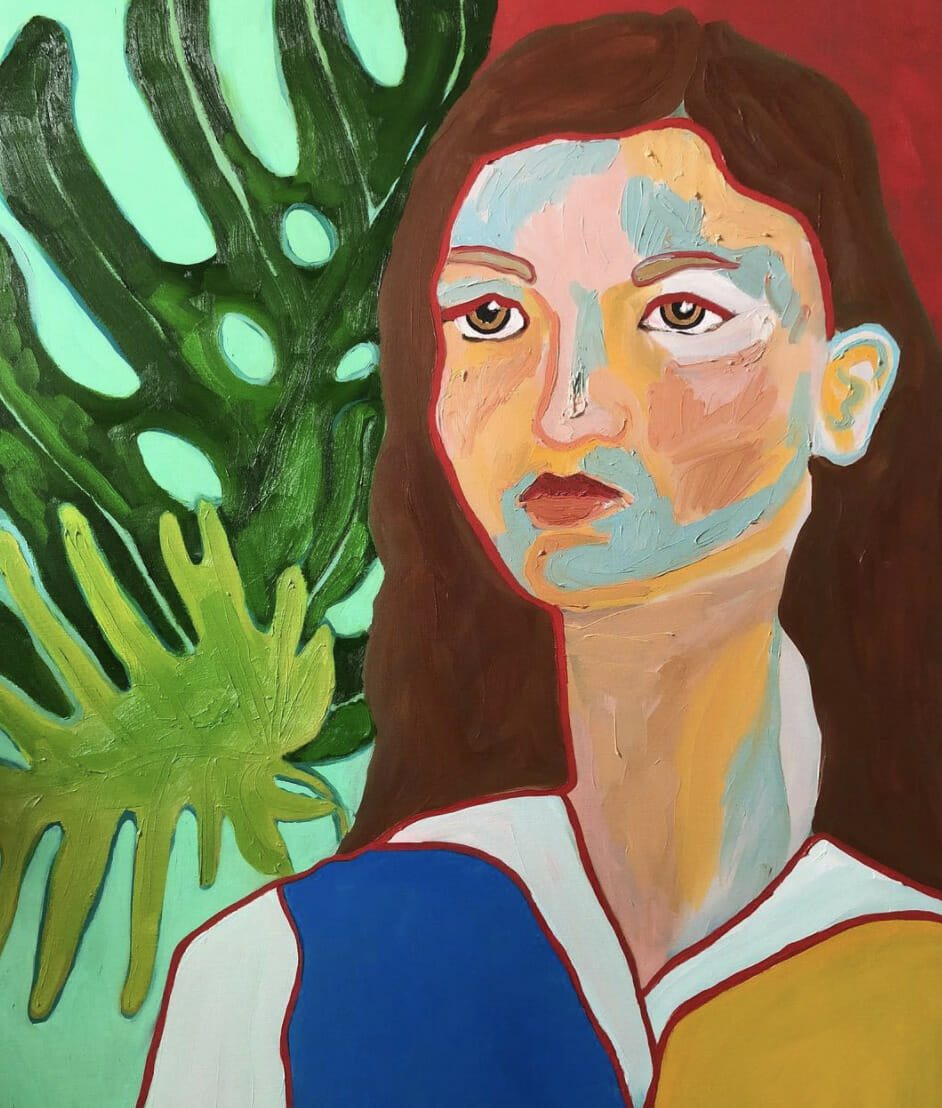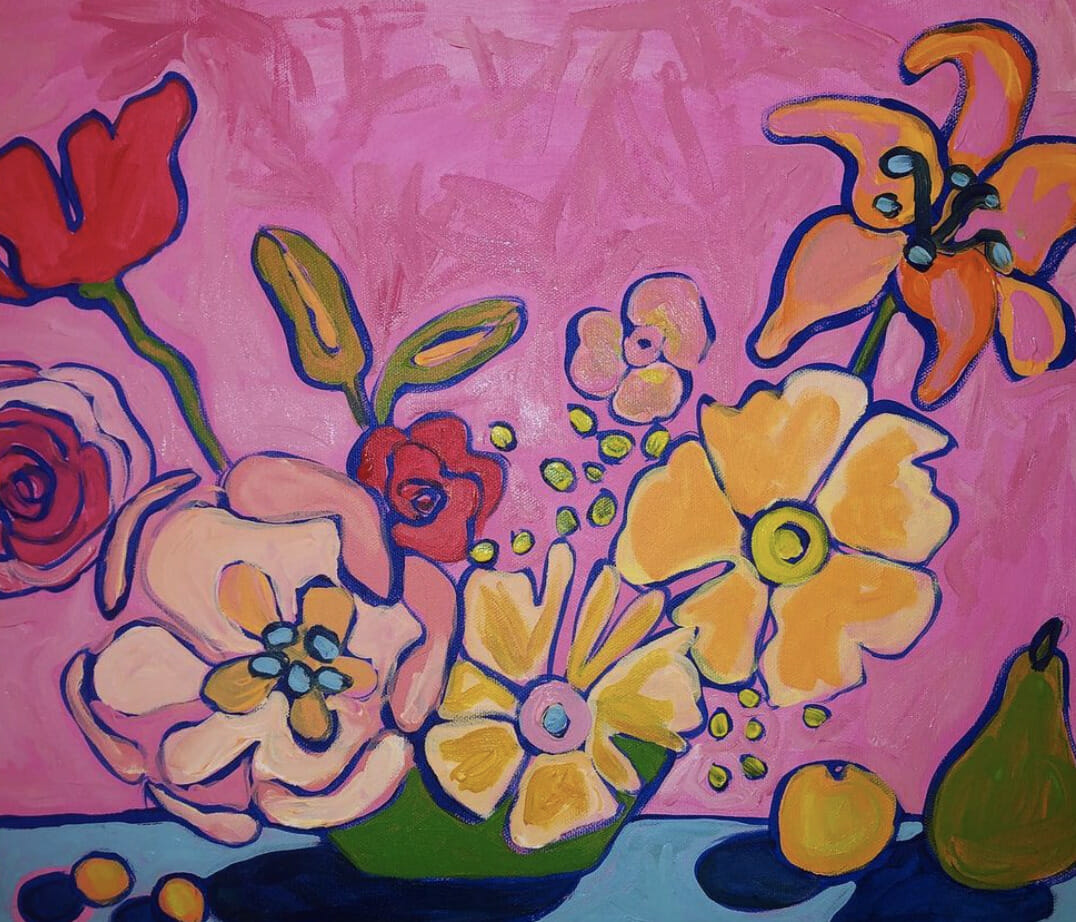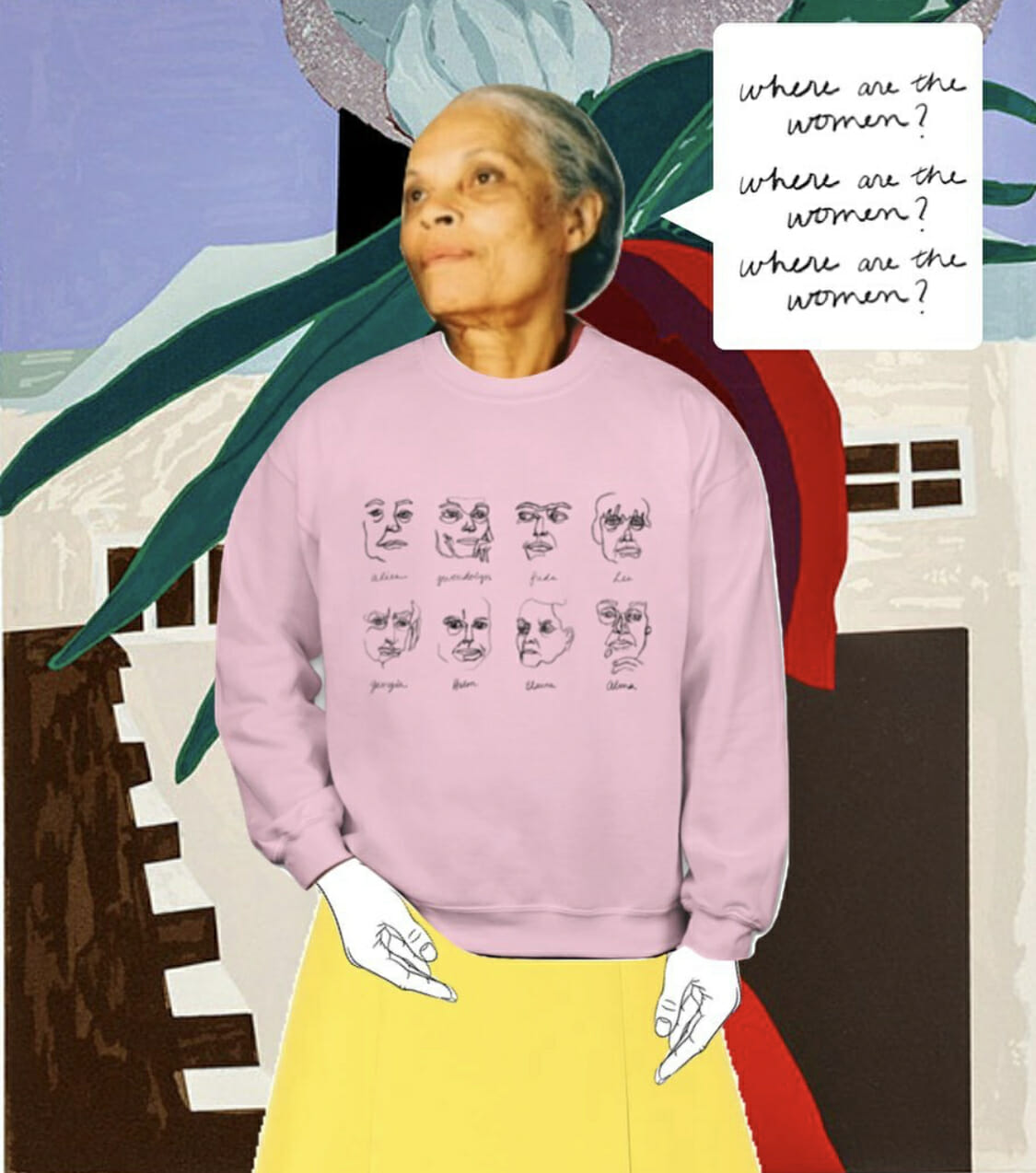Devon Grimes’ art and illustrations capture your attention with their unconventional beauty, then take it to another level by teaching you a lesson on women’s history. Her collection of wearables invite you to ask the question, “Where are the Women?” and encourage us to continue the conversation and our own research.
Her first edition began with art, the world she was most familiar with and later expanded to politics, sports, and S.T.E.M. Her inspiration comes from a curiosity to learn about the groundbreakers we often don’t hear about. Devon will be spending this International Women’s Day with us at HudCo and below shares the method behind the message.

We are thrilled to have you here popping up at HudCo! How did you pursue a career in art and design?
Thank you for having me! I studied oil painting and media studies at UVA, then I moved up to NYC after college. When I decided I wanted to try freelancing, and I narrowed down my options to a field that operated in a studio environment, away from a computer screen, and landed in flower design.
I was always painting portraits in my apartment, but I was too scared to say I was a painter or to think I could pay my rent selling my paintings. I started the sweatshirts with the idea of applying my portraits onto wearable products, therefore making my art more attainable. With the growth of the sweatshirts, my growth as an artist shifted as well, so it’s been an interesting way to see my focus shift and expand. I still freelance doing flowers though!
You combine facts with fashion. Where does your research begin when creating your line of “Where are the Women” wearables?
I started the project with the “Where Are the Women in the Arts?” line because that’s the field of history I have the most knowledge in personally. But I knew when I designed it, I wanted to have a minimum of four additional designs across four other fields.
The first thing I do to research the shirts is talk with my friends and colleagues who work in the related industries. Then I do my own research and cross-reference resources in order to narrow down my lists of contenders. Deciding on which women and facts to use is challenging, but ultimately I try to go with who and what is most impactful.
It’s so hard to decide because obviously, no combination of eight women or a list of facts do any field justice when representing women’s inequality. It’s really just meant to start the conversation, so I try to approach it with that mindset.

International Women’s Month is about challenging gender bias and fighting for equality. Can you share with us a few of the initiatives the sales of your wearables support?
The base initiative is to spread awareness physically by wearing and disseminating the facts. I can’t count the number of times I’ve been wearing one of my shirts on the NYC subway (pre-COVID) and had a stranger ask me about it, helping to spark a new thought or curiosity in the reader/shirt viewer. The extended initiative is to raise money for women’s inequality.
With every purchase of a “Where Are the Women?” sweatshirt or tee, 10% of the proceeds are donated to the Global Fund For Women nonprofit foundation, which is a driving leader in the fight for equal human rights for women around the globe including petitioning for economic justice, sexual and reproductive health rights and freedom from violence for women around the world.
Throughout your paintings and floral arrangements you experiment with unsuspecting color relationships. Where does your inspiration stem from? In what ways do you tap into your creativity during times that you don’t feel all that creative?!
My inspiration stems from my daily life and from the faces, shapes, colors, sounds, and movements I see on a regular basis. I’m particularly fond of using bright colors in what I call “ugly” ways—in ways that sometimes don’t always make sense.
I like the idea of using color or subject matter that is typically associated with being beautiful and then taking it and making it crunchy or dark or awkward or highlighted by a color that is grotesque. I think paintings can be funny in that they can be beautiful but also dark even if their colors are bright and vice versa if their colors are visually deep the painting can still be happy.

I think like all creative types, I go through sweeping waves of creative-restlessness. It feels sometimes like I have to suffocate myself from doing anything creative until my idea for a painting boils up to the very brim of my day and then when I’m really dreaming and thinking about it, then I can vocalize it—that’s usually when I get my most solid results. Sometimes that can take weeks and months.
When I’m going through bouts of restlessness, I try not to be super down on myself because it rarely results in any sort of productivity. So when I’m not painting, I like to keep a drawing pad nearby and open. Doing little sketches regularly is a good way to stay active that doesn’t have to feel like large investments of my time or space. I also like to take creative classes outside of the studio arts. I’m generally, always in some sort of class once a week or month. I think it’s important to stay on your toes and often, for me, I need a class environment to feel productive and to ignite a creative spark in my work.
Your designs encourage us to learn about pioneers of their industry. Who is someone that’s made a huge change but is yet to become a household name?
There are so many who were left out of the history books—both men and women—and it’s hard for us (the public) to not know what we aren’t taught.
I just read the obituary of Lenore Janis who passed away at the age of 86 in January of this year. She was fascinating. She was a pioneer of women in construction starting in the 1970s in NYC by way of a theater degree, divorce, and her father’s passing. Founder and president of the Professional Women in Construction nonprofit (1980), Janis was responsible for getting women into construction contracts, which was no small feat in 1980s NYC. She worked all the way up until 2015 and paved the way for women’s rights in construction that still stand today.
My dad owns a construction company. I took wood-shop in the 7th grade and I still remember being the only girl in the class. I wish Lenore Janis had been a household name then so I didn’t feel so out of place at the time, and I hope that she becomes one now for girls and women who want to pursue construction going forward.
Come say hi to Devon and see her work in person on March 8th from 11am–3pm at the HudCo Bar. Shop online all the time here:

